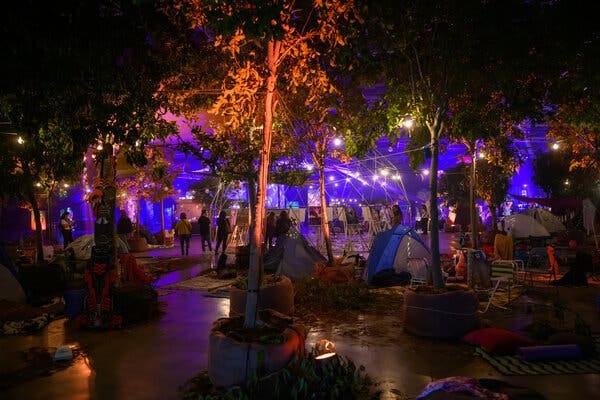Day 73: Stuff
At 6:33 am on Saturday, October 7th, the “ping” from B’s text message woke me up.
“All ok,” it said. “Will send more updates.”
A lot happened that day. Too much. We are grateful that B kept in touch during the day, and frankly, that we didn’t know, especially not in real time, the full scope of what was going on.
By the time he and the others Kissufim were rescued some 14 hours later, his only possessions were the shorts and t-shirt he had used as pajamas the previous night, “Shoresh” (Source) sandals, his phone, rifle and glasses. This may not seem like much, but come to think of it, it’s a lot to bring along when are making a split-second decision to grab stuff before running to the shelter.
Little by little he told us of something else that had been left behind. His army fatigues and dress uniform with his new officer course pin. His running shoes and army boots with custom insoles. His watch. A photo of his girlfriend. His wallet and army ID. Headphones. Charger. A large backpack and a smaller backpack. A laundry bag.
Of course, none of it mattered.
By the time he came home to grab more clothes, he already had a new uniform and backpack. We had three bags of new underwear and socks for him to take to his new assignment. L gave him his watch. I gave him my charger. A month later, he got himself another pair of tennis shoes. Last week, when he gave up on finding anything, he bought himself new earphones.
Then, this evening, he told me that he had heard he might still get back his old possessions, or parts of them. One of his peers, back at the base, had put all the things left behind in the barracks in bags and boxes, which then were kept in a container. The container was finally located in a different base.
I wonder what, if at all, he’ll eventually get back, and in what state. But mainly, I wonder whether his interest is mostly material (they were brand new running shoes after all!) or if there’s a deeper need for closure of some kind.
I’ve seen the news items featuring survivors of the massacre returning to the kibbutz where they had hidden, grateful to find their sweater in the rubble. I’ve listened to an interview of the founder of the “lost & found” where volunteers took whatever they could scrape off the cars and the dirt floor from the site of the Nova Music Festival, and her account of bringing a survivor a makeup bag she had taken to the party. They cried and hugged when they got back their stuff, even if it had little or no material value, and even when it embodied the memory of a terrible day.
It meant getting back a piece of herself, said the woman. It meant building a connection from October 6th to October 8th. It was proof that it had survived, and so had she.
Photo: from the NYT piece covering the art exhibition in Tel Aviv titled “Nova 6:29” that displays unclaimed objects salvaged from the Nova Massacre.

